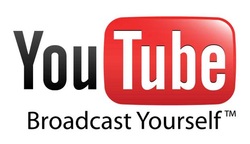YouTube: The Intimate Connection betweenTelevision and Video Sharing

Chapter Six focused on YouTube and its role in the rise of sharing videos. Its creation in 2005 was heralded as an alternative to television, and yet, over the years, especially after its purchase by Google in 2006, it has evolved through various stages by reimagining the nature of broadcasting/streaming online content. José van Dijck's (2013) critical history of YouTube breaks down its years as those of a rebellious teenager from 2005 to 2007, whereas from 2008 to 2012 it grew up as Google began to collaborate with companies rather than fight with them over copyright issues and advertising.
The technology that YouTube pioneered was unique in that it circumvented the conventions of broadcasting by giving users control over content. "Whereas broadcasting was regulated by a central agency controlling the supply and deliverance of signals, YouTube purportedly offered a space where reception and production of signals occurred from numerous individual terminals in the network," noted van Dijck (p. 112). This was the central novelty that set YouTube apart from broadcasting in the early stages as users uploaded self-produced videos: the individual terminals were generating the content.
Users and content were an essential part of the YouTube experience as users uploaded their own videos and then commented on them. However, by 2008, researchers found people were far more willing to watch a video than to log in and leave comments (van Dijck, 2013, p. 115). Van Dijck raised an excellent point about YouTube users: "In early 2012, YouTube claimed to have 800 million unique monthly visitors, up from one million in 2005. How many of those users can be considered active contributors of content or so-called uploaders?" (p. 116). Essentially, 4% of the site's users provide 75% of the site's content (p. 116). For van Dijck, YouTube has shifted away from a social networking site (SNS) and toward a user-generated content (UGC) viewing space, which is odd because a 2011 study found that 63% of the most popular uploaders were not contributing UGC; rather, they were contributing user-copied content (p. 119). Thus, YouTube has slowly shifted away from its original UGC and now mostly contributes recycled content.
Ownership and copyright in YouTube have been an issue since its inception. What Google did, rather than fight against the main broadcast companies, was bring them in and utilize their own structure to provide space and advertising for the content provided by professionals who owned their content. Google designed various applications to police the site for unlawful use of content, which has become a far more complicated form of governance from its early days where users policed the site on their own. However, in an attempt to streamline and place all user data and content under one umbrella, Google brought YouTube and all of its other sites and applications under one large terms of service agreement, which made more than a few users upset given their desire for privacy. Van Dijck (2013) pointed out that now, Google "seems to define itself more and more as a publisher rather than as a connector," which is odd given its original stance concerning how it wanted to connect the world through search (p. 124).
This publishing aspect served as YouTube's business model of incorporating advertising revenue from companies outside of YouTube, while collaborating with users who have popular sites. Essentially, if a lot of people go to your YouTube channel, then, much like the Nielsen ratings for broadcast television, it is clear that you have an audience and if that is the case, YouTube would love to be able to broker a deal where they pay you to put advertising on your channel. Thus, the user makes money and YouTube makes money.
What van Dijck (2013) found most interesting about the history of YouTube was its shift in using users: "It is remarkable how often the participatory ideal of connectedness is invoked to warrant the need for commercial exploitation of connectivity" (p. 130). Google desperately wanted to keep YouTube's appearance as being a space where anyone can go and share and connect, and yet, the current platform no longer fosters community, only monetized content. However, regarding this monetized content and usage, this chapter did an excellent job of showing how a SNS can come full circle as YouTube went from a UGC site to a recycled content site and then back to a UGC site with advertising that profited Google and the user. Users who have accounts and upload their content to YouTube do so as a means to make money directly from the content itself, unlike Facebook and Twitter where those SNSs are merely roadsigns directing you to where you may purchase their products or view their content. YouTube is unique in that respect, something I do not think van Dijck explored enough via specific user and content examples.